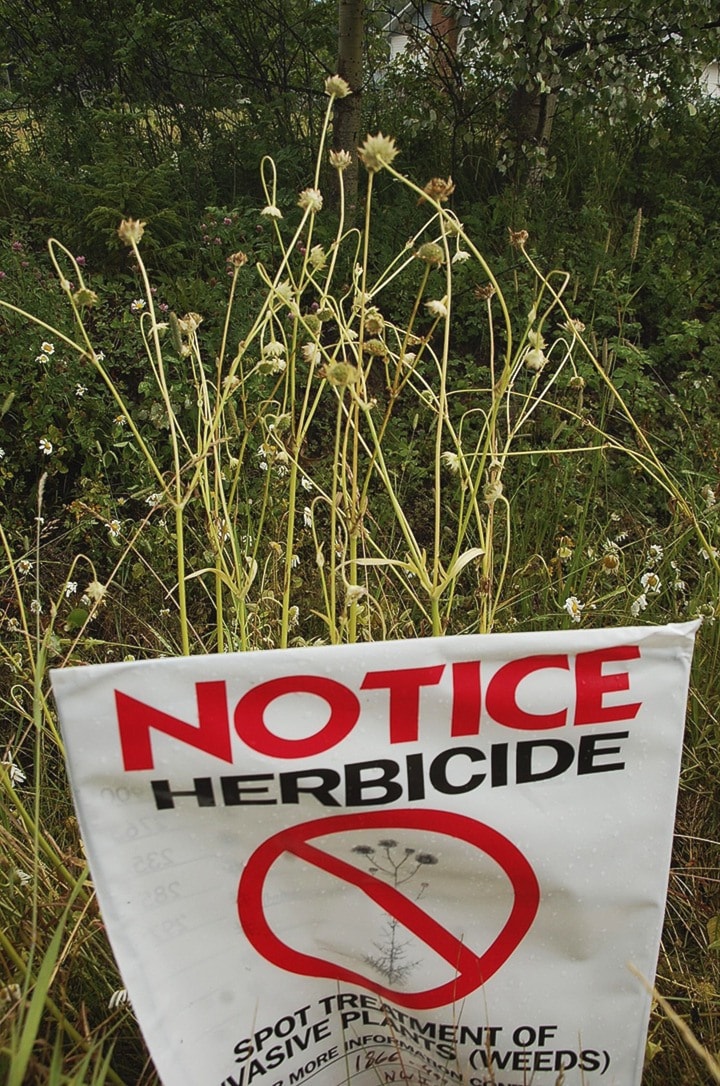Are herbicides valuable or dangerous?
Buck Flats resident Laurie Fabian says there is never a time to spray herbicides.
"Under no circumstances," she said. "It goes into our watershed."
Fabian's frustration arose after a contractor sprayed Field Scabious with Milestone (Aminopyralid) on the Buck Flats Road right of way.
"I live on a flood plain. The water table is 1.5 feet below surface," she said.
"Milestone is residual in the soil… the water level comes up every spring."
Milestone is a fairly new herbicide that kills all broadleaf plants but not grasses and was approved by Health Canada in 2006.
The Milestone Fact Sheet says it has low toxicity to birds, fish, mammals and aquatic invertebrates because it has a surface water breakdown of less than 24 hours and a very low application rate so less chemical is needed.
Because of that, people can spray right up to the water's edge, though the B.C. Government requires a 10 metre buffer on all crown land, said Andrea Easton, Field Coordinator with the Northwest Invasive Plant Council (NWIPC).
Milestone has been tested in water and its effect was “not much of anything,” she said.
“Its not toxic to fish, but it probably could kill some aquatic plants.”
Because herbicides are designed to kill plants and attack plant systems like photosynthesis, most are safe for people, Easton said. “We don’t metabolize them.”
Milestone is residual in the soil for up to two years, and to Easton that is a benefit, as it controls weeds for longer and saves time and money.
She views the work they do and weed spraying as protecting the natural environment and native species.
“We're environmentalists, which is why we don't want the invasive plants taking over,” she said.
But Fabian doesn't like it, as it kills other broadleaf plants like willows, aspen and strawberries and has some long-term effects that are unknown.
"What will it do when it mixes with with the arsenic, calcium, and iron that are already in our water?" she asked.
And if it gets in the water, it will affect people’s gardens, and down the road, how might it contaminate and affect the plants or beef we eat? she added.
“Why not use goats? … You have to work with nature to nurture the land and people.”
Easton said Field Scabious nutrition is comparable to alfalfa for livestock, and they tried to get people to use targeted grazing, but people didn’t buy into it.
But it’s still another tool for farmers, she said.
